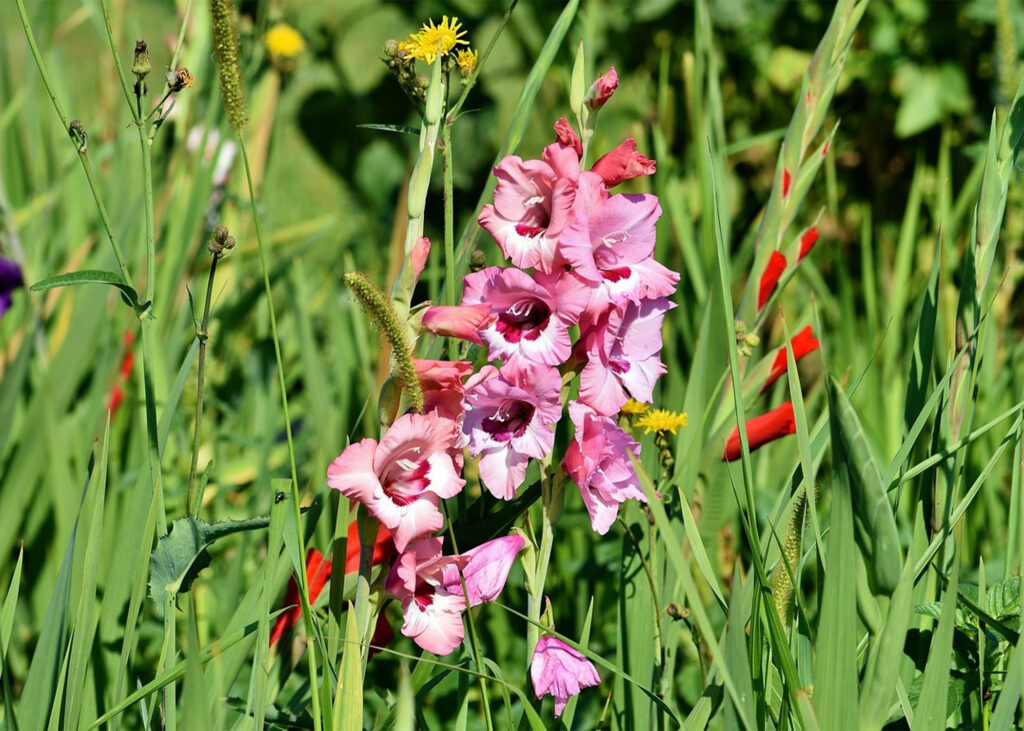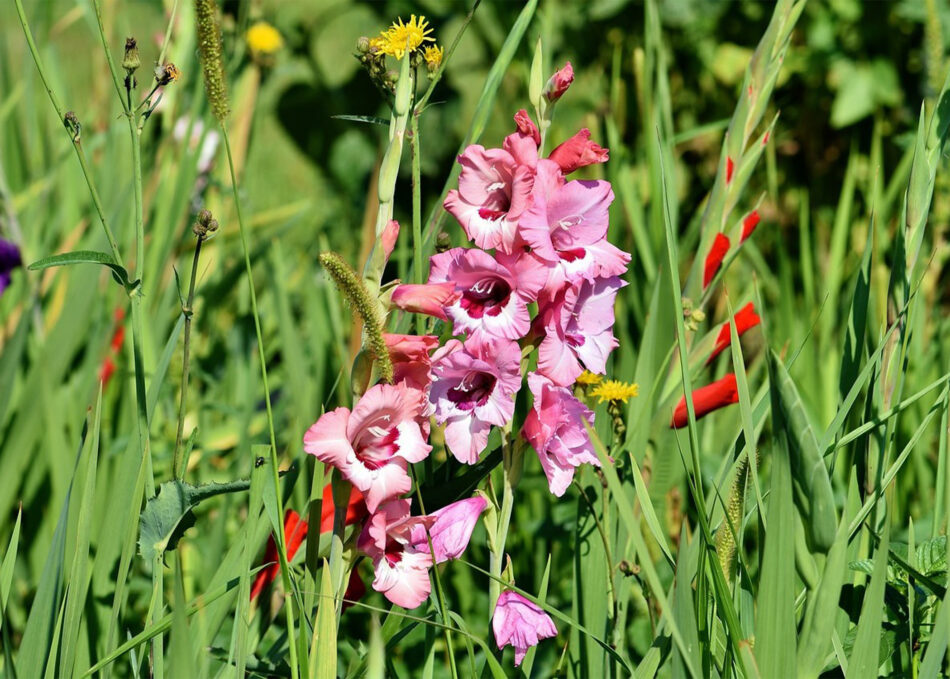You can’t deny the appeal of a gladiolus or its similarity to a sword. These gorgeous flowers are certainly worth adding to your garden, especially if you’re tired of traditional roses and gardenias. Grown for their tall, spiky flower heads, gladioli are also easy-to-care-for and will give your yard a touch of elegance. Read on for tips on growing gladioli and see just how easy it is to add these plants to your garden.
Have you ever seen a gladiolus? They’re often called sword lilies because of their tall, spiky flower heads. Gladioli come in a wide range of colors, and they make beautiful arrangements. If you’re interested in growing your own flowers, gladioli are a great choice! They’re easy to care for, and they grow quickly. Plus, they’ll add a touch of elegance to any garden. Check out this guide to learn more about growing gladioli!
What Is a Gladiolus?
Gladiolus is a type of flower that grows from a bulb and blooms every year.
The gladiolus, sometimes known as the sword lily, is a flower with a somewhat unique appearance. It is frequently referred to by its scientific name. The gladiolus is found in Asia, Mediterranean Europe, South Africa, and tropical Africa. The flower’s center of diversity can be found in the Cape Floristic Region.
The roots of gladioli are grayish and woody. The flowers bloom from greenish corms (similar to crocuses) that are wrapped in several layers of brown, fibrous tunics.
The leaves are simple, sword-shaped and longitudinal grooved, with a sheath at the top. The bottommost leaf is cut short to form a cataphyll. In cross section, the leaf blades may be either flat or cruciform.
Unmodified wild species’ blooms range from tiny to more than 40 millimeters broad, and inflorescences may contain one or many flowers. Centuries of hybridization and selection have produced the wonderful enormous flower spikes on the market.
The flower spikes are enormous and one-sided, with secund, bisexual flowers that have two leathery green bracts beneath each petal. The sepals and petals are nearly identical in form, and they’re called tepals. At the bottom, they are connected into a long tube shape. These blooms come in a variety of colors, such as pink to pale or medium purple with white contrasting markings, and white to cream or orange to red.

Cultivation and Usage of Gladioli:
The corms of most species and hybrids should be lifted in the fall and kept over winter in a frost-free location, then replanted in the spring in temperate regions. Many species from Europe and high mountains in Africa, as well as minute “Nanus” hybrids, are considerably hardier (to at least -26°C or -15°F) and can be kept outside in regions with sufficiently dry winters. Staking large-flowered types while they are still wet is recommended. When the sword-shaped flower heads appear, the plants must be staked individually.
Before lifting and preserving the corms, wait for the leaves to dry naturally. Plants may be propagated from offsets produced by the parent corms or from seed. It takes many years for them to reach flowering size, whether they’re reproduced via cormlets or seed. To keep them vigorous, clumps should be uprooted and divided every few years.
August’s birth flower is gladiolus. The flowers associated with a fortieth wedding anniversary are gladioli. Morrissey is known to dance with gladioli hanging from his back pocket or in his hands, particularly during the period of The Smiths. This aspect of his was highlighted in the music video for “This Charming Man,” where he swung a bundle of yellow gladioli while singing.
F.A.Q
Why is gladiolus called sword lily?
Gladiolus are certainly a unique plant, with a name rooted in the Latin word gladius, to describe what they look like when they first flower. This means that the ‘sword lily’ name is an apt description of the flower from its early days. The plant is beautiful and it brings color to our garden.
What does gladiolus symbolize?
Gladioli are meant to convey strength of character, remembrance, faithfulness and moral integrity. Gladioli represent “strength in character, loyalty and a feeling of fidelity”. It’s said that gladiolus features a sword-like stem and that it pokes you in the heart with its sharp ends. They express gratitude for someone who has been there for you in times of need. Gladiolus flowers have a lovely vanilla fragrance.

